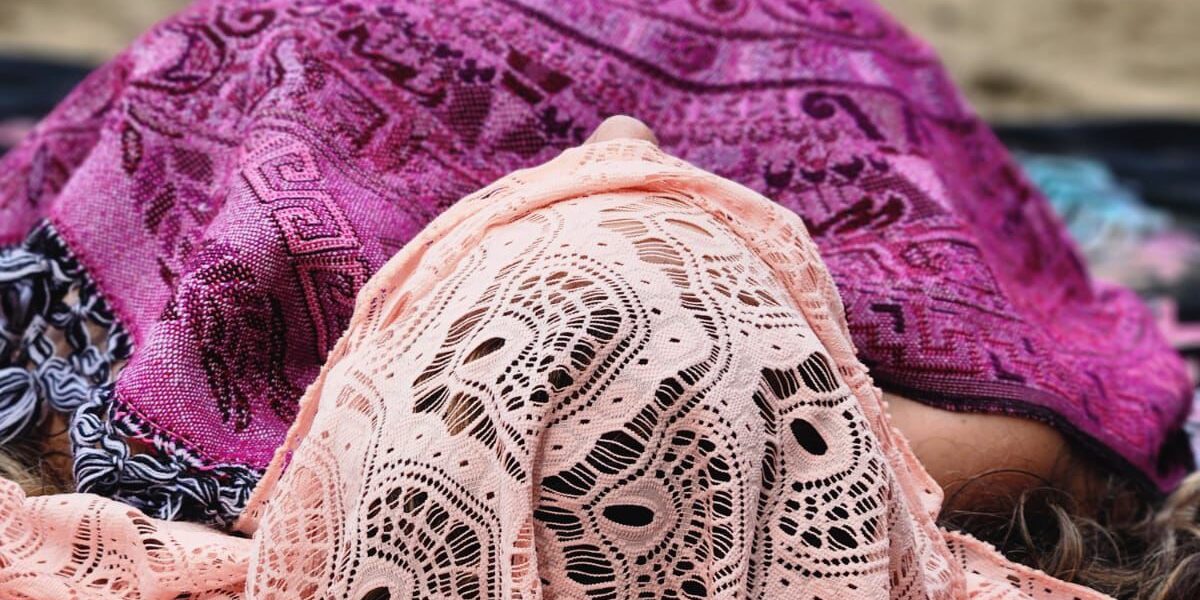A hip-closing ceremony is an ancestral ritual rooted in traditional cultures, particularly from Mexico and Latin America, where midwives and wise women practiced it as part of the postpartum recovery process. This ceremony is designed to support a woman after childbirth, both physically and emotionally, helping her “close” her body and energy after the expansion experienced during pregnancy and birth.
What Does the Hip-Closing Ceremony Involve?
The hip-closing ceremony is an intimate and healing ritual that uses wrapping and massage techniques with rebozos (traditional shawls). During pregnancy and childbirth, a woman’s body expands to accommodate the baby, and this ceremony symbolizes a return to her center, providing containment and closure for this cycle of physical and emotional openness.
Key Elements of the Ceremony:
Preparing the Space:
The ceremony begins by creating a safe and calm environment where the mother feels protected and at peace. Candles, essential oils, and soft music are often used to set a sacred space. The focus is to offer the mother a place to deeply relax and reconnect with herself.
Wrapping with Rebozos:
A central part of the ceremony is the use of rebozos (long shawls) that are placed on various parts of the body, including the head, shoulders, abdomen, hips, and legs. The wrapping is done gradually with gentle movements. Each body section is wrapped and then gently tightened to provide a sense of containment and closure.
Physical closure: The wrapping helps the mother “close” physically, especially around the hips and other parts of the body that expanded during childbirth, promoting a sense of physical wholeness.
Emotional closure: The act of wrapping also carries emotional symbolism, helping the woman close the emotional openness experienced during pregnancy and birth, allowing her to release any emotional burden or trauma related to the process.
Relaxing Massage:
Before the wrapping, the mother often receives a relaxing massage with natural oils that help release tension and soothe the body. This massage focuses not only on the physical body but also on the energy, aiming to align and balance the woman’s mind and spirit.
Intention and Ritual:
The ceremony is carried out with a deep intention of support, self-care, and closing a significant cycle in the woman’s life. Often, the woman is guided to reflect on her birth experience, release any held emotions, and focus on healing. In some cases, the ceremony may include meditations, visualizations, or positive affirmations that reinforce this closing process.
Closing the Cycle of Openness:
At the end of the ceremony, the mother experiences a profound sense of closure, both physically and emotionally. This ritual marks the end of the birthing process and the beginning of a new stage as a mother, helping her reconnect with her body and energy in a gentle yet powerful way.
Benefits of the Hip-Closing Ceremony:
Physical: Wrapping and compressing the body can help realign bones, organs, and soft tissues, promoting physical recovery after childbirth. It may also relieve hip and pelvic pain.
Emotional: The ritual provides space for the woman to process emotions related to birth, which can be deeply healing, especially if the experience was challenging or traumatic.
Energetic: The ceremony allows the mother to reconnect with herself, closing any open energy and balancing her being after the intense experience of childbirth.
In summary, the hip-closing ceremony is a healing and meaningful ritual that honors the postpartum recovery process. Through wrapping with rebozos, massage, and emotional containment, the mother feels supported as she physically and energetically closes the birth cycle, reconnecting with herself in this new chapter of her life as a mother.
Sign up for our online education platform and learn with us at: https://cursos.medilacta.com/registro/
More information at (+506)8395-9807
Dr. Marianela Hernández Chaves
Specialist in physiological childbirth and obstetric emergencies
Specialist in breastfeeding
Perinatal educator
